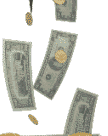The battle of the tool company stocks!!! I have used tools for work and home repair in the past. When I was in the construction industry I used a set of Dewalt portable power tools, they were very reliable and they worked great. Dewalt is a Stanley Black and Decker product, (symbol SWK). I have also purchased Stanley hand tools, I own some pliers, philips head drivers, screw drivers etc. right now and they are great tools.
I also worked for a municipality doing landscape construction and street maintenance. At that job I used huge sets of Snap On hand and power tools, (symbol SNA). Snap On sells those great huge tool sets that come in red drawers. The Snap On tools I used were great.
So I have actual hands on experience using the tools that both of these companies sell. All in all I would say that they are similar in quality and I would not hesitate to buy either brand. Both are made in the U.S., SWK in Indiana and SNA in Wisconsin. I couldn't say which one made a higher quality tool, so I did a bit of research online and found that Snap On tools were a bit more highly recommended then Stanley/Black and Decker/Dewalt. Both companies put out high quality products.
Jim Cramer had a segment on his show last Thursday, January 12th about SWK. He really likes the stock and after looking into it myself I can't disagree with his outlook on the stock. SWK has a ridiculously low PEG ratio of .76 a relatively low P/E ratio, and good growth. SWK is also much larger than SNA which gives it more market share and weight in the tool industry.
After doing some quick research I found that I like SNA slightly better. The tools are a bit better according to internet chatter, tool magazines etc. The share price of SNA hasn't been artificially raised by being on Mad Money so it has some more room to run up in the immediate future. SNA has a lower P/E ratio and higher net margins then SWK. I'm a sucker for low P/E ratios and high margins.
Both SNA and SWK are well liked by Wall Street analysts. Both have great yield protection, around 2.5% each. Both have good P/E ratios, PEG ratios, good technical charts, management, and most importantly both make high quality products that are American made. Both are tied to a U.S. housing sector that should be on the rebound. These are good stocks.
In the end I like SNA slightly better then SWK because I think SNA has a bit more room to run higher in the immediate future. Plus Jim Cramer is my hero so every time I can pick against him it makes me feel like I'm a free thinker! I did not do all the necessary research it takes to actually purchase shares of these stocks. I did not read the 10-Qs, or the 10-k thoroughly and I did not listen to the conference calls. So if you think you would like to purchase these stocks make sure you do your homework please!!! If you don't know what 'homework' means give your money to a professional extra please!!! All that being said looking at the charts I like SWK at around the $68 level and SNA at around the $52 level.







































